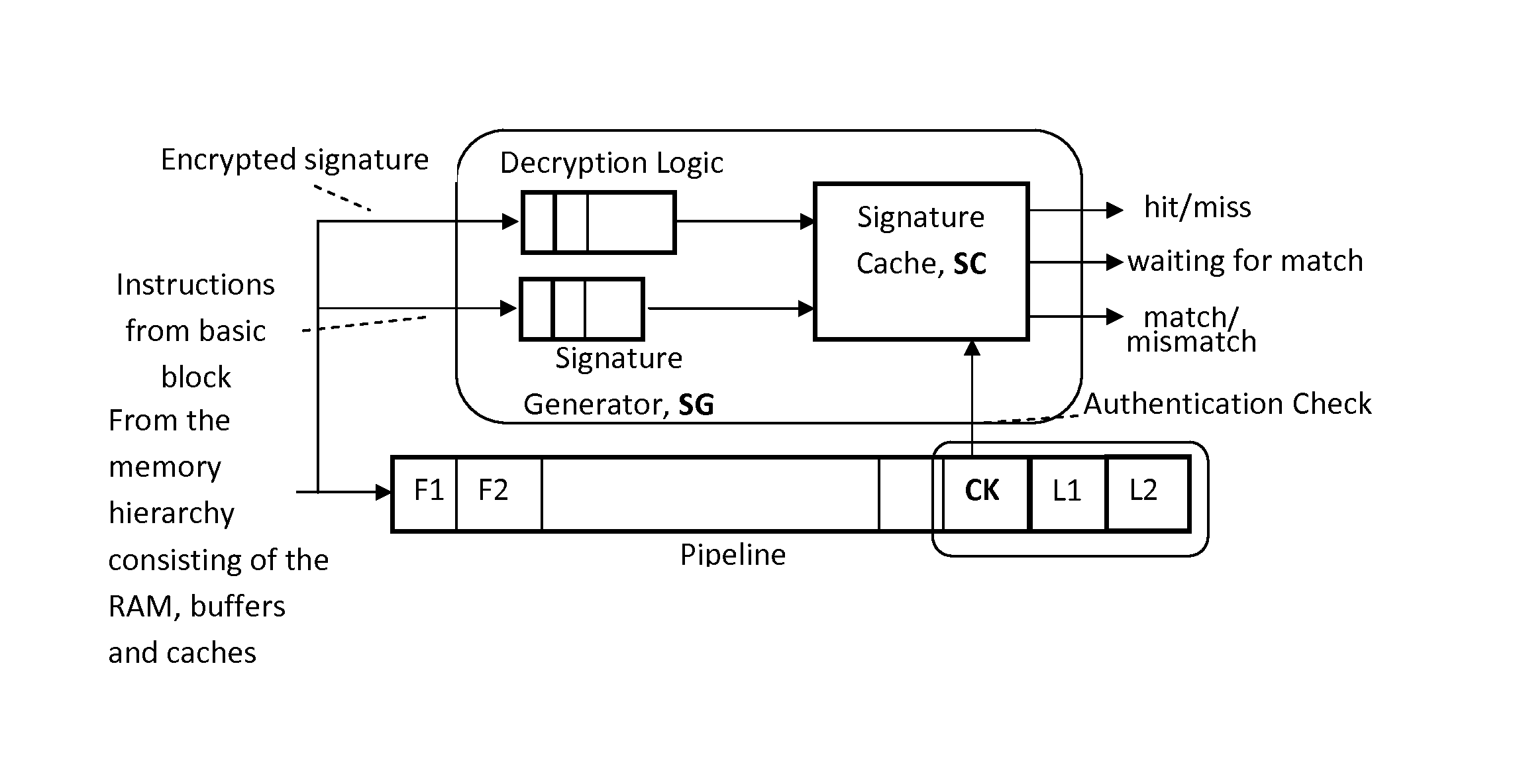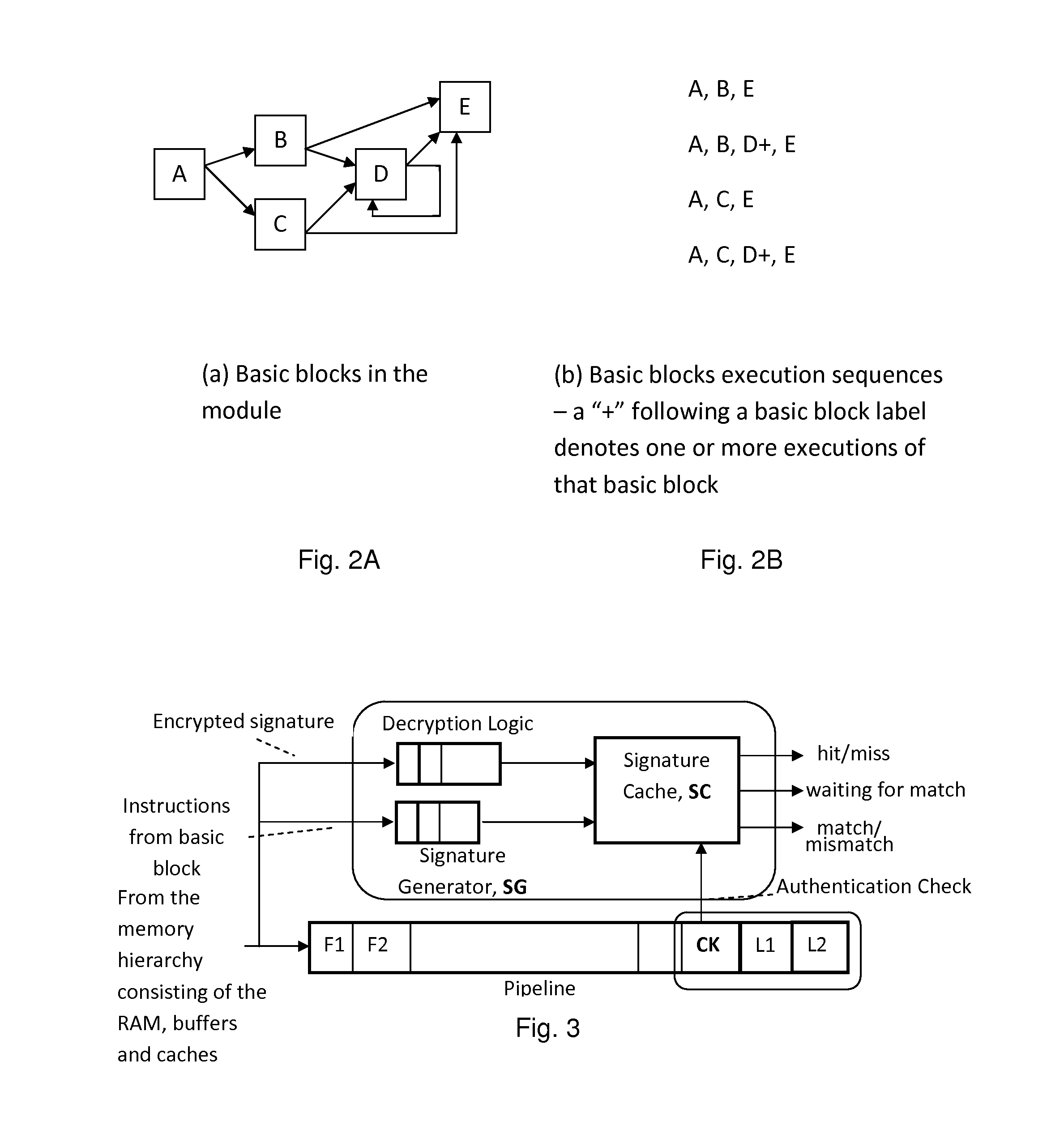System and method for validating program execution at run-time using control flow signatures
a control flow and execution method technology, applied in the field of secure computing, can solve the problems of small hardware enhancements required to implement the technique, and the execution overhead is negligible in most cases, and achieve the effect of not substantially delayed instruction processing and little or no processing delay
- Summary
- Abstract
- Description
- Claims
- Application Information
AI Technical Summary
Benefits of technology
Problems solved by technology
Method used
Image
Examples
example 1
Validating the Execution of a Single Module
[0123]Within a single software execution module (programs and functions linked statically), the legal control flow paths can be specified as a series of segments from the each entry point to the module to the next instruction that can change the flow of control, as well as between consecutive instructions that can change the control flow. Each segment is essentially a basic block of instructions—with a single entry point and a single exit point. Validating the execution of the program module can be done continuously at run time by computing an MD-5 digest (or another hash function, such as SHA-2 or the proposed SHA-3) on instructions executed at the point when the last instruction in the basic block commits.
[0124]The actual behavior of the branch instructions are also recorded to identify the segment (that is basic block) that is entered following a control transfer instruction. These MD-5 digests can be compared at run-time against the cor...
example 2
Validating Cross-Module Executions
[0133]When control is transferred from one module to another (as in a call to a dynamically bound library function or a system call), an additional validation is needed to ensure that the target module can be legally called by the program. Within the functions in the called module, validation of the execution at run-time proceeds as for a single module, similar to the scheme described in Example 1.
[0134]The control flow signature for a series of instruction can be computed in a variety of ways as described below:[0135]1. As a hash function of the complete bit patterns that represent individual instructions, such as, but not limited to, an MD-5 digest function, or a cyclic redundancy code (CRC) function, of these bit patterns. The bit patterns of the instructions can be padded to equalize (or normalize) their length, for the purpose of computing their signatures. Additionally, some default or pre-assigned initial value can be optionally used as the i...
example 3
Variation 1: Control Flow Signatures are Computed and Verified on a Per-Basic Block Basis
[0139]In this variation, the control flow signatures are computed for the instructions within each individual basic block, and the computed signature for each executed basic block is verified against an expected signature of that basic block. Each computed signature thus has no dependency with the signatures of its preceding basic blocks.
[0140]When the control flow signatures are computed and validated on a per basic block basis, each basic block should be identified uniquely. A unique identifier can be assigned for each basic block in the program by the compiler or any software module that identified each basic block in the program and computes their expected signatures. The unique identifier for a basic block can be either the address of its first instruction or the address of the last instruction in the block, or the address on an instruction within the block that triggers the signature valid...
PUM
 Login to View More
Login to View More Abstract
Description
Claims
Application Information
 Login to View More
Login to View More - R&D
- Intellectual Property
- Life Sciences
- Materials
- Tech Scout
- Unparalleled Data Quality
- Higher Quality Content
- 60% Fewer Hallucinations
Browse by: Latest US Patents, China's latest patents, Technical Efficacy Thesaurus, Application Domain, Technology Topic, Popular Technical Reports.
© 2025 PatSnap. All rights reserved.Legal|Privacy policy|Modern Slavery Act Transparency Statement|Sitemap|About US| Contact US: help@patsnap.com



